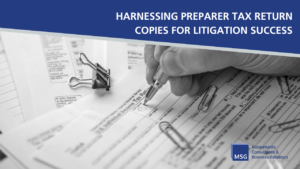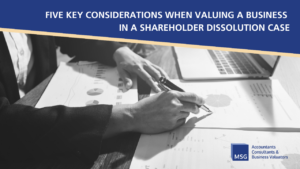Occupational fraud continues to wreak havoc on businesses, with annual business losses reported to exceed $4.7 trillion worldwide. Fraud experts have long suggested that the presence of three conditions, known as the “fraud triangle,” greatly increases the likelihood that an organization will be defrauded. The classic fraud triangle, as conceived by criminologist Donald Cressey, consists of Pressure, Rationalization, and Opportunity. The Fraud Triangle, Cressey Pressure A perpetrator experiences some type of pressure that motivates fraud. Pressure can come from within the organization – for example, pressure to meet aggressive earnings or revenue growth targets. Alternatively, the pressure could be personal, such as the need to maintain a high standard of living, pay off debt, medical bills, or gambling. Rationalization Perpetrators often mentally justify their fraudulent conduct. They might tell themselves that they’ll pay back the money before anyone misses it, or reason that: They’re underpaid and deserve the stolen funds, Their employers can afford the financial loss, They’ll lose everything (or someone) if they don’t commit fraud, “Everybody” does it, or No other solution or help is available for their problems. Most employees who commit fraud are first-time offenders who don’t view themselves as criminals, but as honest people caught up by circumstances beyond their control. By rationalizing, perpetrators overcome ethical barriers that generally guide their conduct. Opportunity Without opportunity, even motivated and rationalized perpetrators can’t commit fraud. Occupational thieves exploit perceived opportunities that they believe will allow them to go undetected. Weak internal controls, oversight, and auditing create opportunities […]
Blog
We have distilled decades of experience at the intersection of law, business and finance into a suite of articles to help our clients make sense of business valuation, forensic accounting, and litigation support. Please visit our site regularly for our latest content.
Looking Out for Fraud: What Attorneys Need to Know
Posted in Forensic Accounting, on Oct 2023, By: Mark S. Gottlieb
ShareLegal Consequences of Inflated Valuations: Trump Case and Beyond
Posted in Business Valuation, on Sep 2023, By: Mark S. Gottlieb
Share
Yesterday, New York Supreme Court judge Arthur Engoron ruled in the ongoing lawsuit alleging former President Donald Trump and his businesses provided false financial statements to obtain loans and other benefits. This case piqued my interest as a credentialed business valuation expert, forensic accountant, and expert witness. Yesterday’s decision was over thirty pages long, and I wanted to break down the extent of the document for those following these ongoing legal battles. The New York Attorney General’s office had brought claims against President Trump, his family members, and corporate entities under a statute prohibiting persistent fraudulent conduct in business. The AG submitted evidence that President Trump inflated the valuations of his assets on financial statements from 2011 to 2021. For instance, President Trump claimed his apartment in Trump Tower was 30,000 square feet, later learned to be about three times its actual size. This overstatement led to an overvaluation of over $100 million! The Court also found evidence that other Trump assets, such as branding premiums, shared the same misstatement. President Trump’s legal team asked the Court to dismiss the entire case, arguing the financial statements contained disclaimers and that determining value is subjective. Those requests were later denied. The Court ruled yesterday that the Attorney General provided sufficient evidence that President Trump knowingly submitted false financial statements over multiple years. The judge ordered the dissolution of several corporate entities owned by the Trumps and the appointment of an independent monitor for the Trump Organization. While further potential penalties […]
Harnessing Preparer Tax Return Copies for Litigation Success
Posted in Financial Advisory, on Sep 2023, By: Mark S. Gottlieb
Share
Picture as you may, a matter that requires testimony regarding the fair market value of a closely held business. Like most cases of this instance, the matter will be highly contentious. I am not writing about either side’s expected arguments or their respective merits. In this instance, I want to discuss how counsel for each party organizes their material before the Court. Specifically, the income tax returns the financial experts used to form their underlying opinions. We have all witnessed this scene before. Counsel for each party rolls in boxes of documents in anticipation of a lengthy trial and proudly lines the front of their desk with their respective “Trial Binders.” Each binder is indexed, labeled, and, if lucky, already pre-marked as Exhibits. And, of course, courtesy hard or electronic copies are provided for the Court. Amongst these documents are the Subject’s personal and business income tax returns. The Subject’s income tax returns are pivotal to all stakeholders: the Plaintiff, Defendant, and even the tax preparer, who may be called to testify as a fact witness – not to mention your valuation expert who has written a report and will testify to their opinion of fair market value. Now comes the purpose of this article. The Plaintiff begins their case and refers to a specific page and tax return within their trial binder. You turn to that page and find identifying the referenced line item impossible. You ask your adversary and the Court for clarification, hoping a negative reference to […]
Five Key Considerations When Valuing a Business in a Shareholder Dissolution Case
Posted in Business Valuation, on Aug 2023, By: Mark S. Gottlieb
Share
For the better of the past two years, we have been working on a shareholder buyout dispute centered on the value of a fifty percent interest in a business and its ability to support the buyout provisions. The shareholder’s agreement outlined the valuation standard and the terms of its payment. Despite this direction, each party’s valuation proposed at arbitration was millions of dollars apart. I will save the particulars of this case for another time but share with you that the value opined in our report was accepted in the arbitrator’s binding decision. One of the reasons for this favorable business divorce case outcome was that our client’s attorney respected our focus on essential valuation fundamentals. In return, his direct case and cross-examination led to a well-versed presentation of the issues at bar. Attorneys tend to many issues in a shareholder dissolution case; having a command of opposing valuation reports is just one. Here are five key considerations attorneys should consider when reviewing their experts’ reports and those of the opposing side. 1. Standard of Value The choice of a standard of value is fundamental to the valuation process. Two common standards often considered are fair market value and fair value. Fair market value is defined in Revenue Ruling 59-60 of the Internal Revenue Code: The amount at which the property would change hands between a willing buyer and willing seller, when the former is not under any compulsion to buy, and the latter is not under any compulsion to […]
Treasury Yields Are Increasing: How Does This Impact The Valuation of Closely Held Businesses?
Posted in Business Valuation, on Aug 2023, By: Mark S. Gottlieb
Share
Have you seen the bank advertisements looking to lure account holders to open short-term CDs at 4.5% or 4.9%? You may have read this article in the Wall Street Journal tracking the increasing treasury bill rates over the past few months. Where is this coming from, and how will this recent increase in Treasury Yield rates impact the valuations of closely held businesses? Figure 1. Adapted from Market Yield on U.S. Treasury Securities at 10-Year Constant Maturity, Quoted on an Investment Basis. FRED | St. Louis Fed. The short answer to this question: It may profoundly impact various aspects of the economy – including the valuations of closely held businesses. The complex relationship between financial variables can reverberate across different sectors. We will delve into the mechanisms behind some of these interactions and explore how rising treasury yields can influence the valuation landscape of closely held businesses. Treasury Yields 101 First, it’s essential to understand what treasury yields are and how they function. Treasury yields represent the expected return from investing in government bonds. This return is often called a “risk-free rate” since the government guarantees it. When yields rise, it generally indicates that the market demands higher compensation for lending money to the government due to factors like inflation and changes in monetary policy. Discount Rate And Present Value An increase in treasury yields directly affects the computation of the discount rate and, in turn, affects the valuation of closely held businesses. In business valuation, the discount rate is […]
Home Office Deduction Considerations During COVID-19
Posted in Economic Damages, on Jan 2021, By: Mark S. Gottlieb
ShareThirty years ago, when I was a real accountant (haha), January was one of the most hectic months of the year. The preparation of annual payroll tax returns marks the quiet beginning of tax season. You should now start to receive W-2’s, 1099’s, and other tax forms to be set aside for the preparation of your 2020 individual income tax return. Many of our regular readers are now working from home on either an intermittent or permanent basis. For those of you in this category, you may be able to take advantage of the employee home office deduction. In the past, the standards for deducting home office use have proven notoriously prohibitive. Pursuant to the 2018 Tax Cuts and Jobs Act, requirements for W-2 wage earners clearly stipulate that for its costs to qualify, a given home office must: Be used at the convenience of the employer Constitute a specifically allocated area used expressly for work-related purposes and Have space for storing work-related materials. There are of course numerous other requirements, but historically these have proven sufficient barriers for many remote employees. But since the advent of COVID-19, two novel legislative pathways have opened up: Section 139 (Disaster Relief Payments) and Section 165 (Losses) The primary purpose of this blog post is to briefly discuss both of these two sections of the Internal Revenue Code. Section 139 (Disaster Relief Payments) Section 139 provides that any funds an individual may receive as Qualified Disaster Relief Payments cannot be included in […]
What To Consider In Determining Owner’s Compensation
Posted in Business Valuation, on Jan 2021, By: Mark S. Gottlieb
ShareWhether a company is being valued for a shareholder or an equitable distribution dispute, one of the most common normalization adjustments to a subject company’s income stream is owner compensation. Both the Court and the IRS tend to closely scrutinize this issue, with the IRS in frequent disagreement as to the reasonableness of shareholder-employee compensation. For income tax purposes, business owners typically prefer to classify payments as tax-deductible wages. This allocation reduces both their corporate taxes and their federal taxable income. As one might imagine, the IRS is correspondingly meticulous in its examination of these classifications. If it believes that owner compensation is excessive, it may claim that non-deductible dividends have been disguised as compensation. As they pertain to business valuation, the determination and application of reasonable shareholder-employee compensation are similarly contentious. The correlative relationship between owner compensation and cash flow means that when compensation is inflated, the available cash flow is reduced. Correspondingly, the indicated value under the income approach will be likewise reduced. But whether challenges to owner compensation emanate from taxing authorities or a rival valuation expert, the case law in this area strongly indicates that there is no global rule of thumb – reasonable officer compensation is determined according to the particular circumstances of an individual case. It is for this reason that Trial and Appellate Courts often struggle to resolve questions regarding reasonable officer compensation. For non-valuation professionals, this confusion is perhaps attributable to the number and diversity of sources used to ascertain reasonableness. […]
The Biden-Harris Ticket Promises To Make Major Tax Changes. Your Clients May Want To Act Now.
Posted in Business Valuation, on Nov 2020, By: Mark S. Gottlieb
ShareThis has certainly been an eventful week. My beloved New York Mets were sold. Although I believe Steve Cohen will be up to the task, I am somewhat resentful that my bid to purchase the Amazins was rejected. On the other side of the plate, Joe Biden can claim victory in the turbulent presidential election. Despite the possible legal battle, it appears that the Biden-Harris battery is now warming up for a January 2021 inauguration. President-elect Biden has made no secret of his intent to raise $3.5 trillion in taxes over the next ten years. The intended contributors will be corporations and individuals earning over $400,000 per year. Conversely, lower-income taxpayers may benefit from tax-cutting incentives from items such as refundable credits, etc. Biden’s ability to effectuate any tax change heavily depends upon the Democrats’ ability to win both the House and Senate. The Democrats currently hold a majority in the House of Representatives but are taking swings at the two remaining Senate seats up for grabs. If the Democrats sweep both available seats and get a 50/50 split in the Senate, then the Biden tax reform vision could theoretically be passed without a single Republican defector. Pending a home-field advantage, the Biden tax reform could pass via a Budget Reconciliation which will not require 60 votes for passage. Alternatively, they will only need a majority of 51 votes. Assuming everyone votes along the party line, Vice President-elect Kamala Harris will cast the deciding vote. Without the benefit of […]
What Has COVID-19 Taught Us About Neutral Experts?
Posted in Business Valuation, on Oct 2020, By: Mark S. Gottlieb
ShareThe news cycle is currently inundated by the testimony of medical professionals of various backgrounds and experience, and as we have seen, their opinions and advice can starkly differ. While many have advocated for social distancing and the use of masks, others have sought to cast doubt on the productivity of these measures, claiming either that they are unnecessary or that they have no impact on the virus’s transmissibility. Recently, lawyers for the CT Freedom Alliance offered two medical expert witnesses that were subsequently rejected on the basis that neither was sufficiently qualified to serve as an expert. In response to one individual’s previous attestations that viruses are nonexistent and vaccines poisonous, Judge Thomas G. Moukawsher expressed his clear inclination that established scientific evidence should not be disputed. This is an extreme example but one that bears mentioning. Judges are frequently confronted with radically opposing partisan expert opinions. Irrespective of their familiarity with the subject at hand, they must decide as to which opinion is most correct. With regards to COVID-19 and the preventative measures thereof, there are a sufficient number of credible and widely circulated opinions as to make the credibility (or lack thereof) of witnesses such as those described above relatively obvious. But what of matters that concern subjects that aren’t so broadly known? Let us take for example the industry accepted principles and standards in business valuation. In a matrimonial, shareholder, or estate dispute, it is often that both parties hire a business valuation expert. Occasionally, […]
Analytical Tools For Attorneys
Posted in Business Valuation, on Sep 2020, By: Mark S. Gottlieb
ShareFor those of you familiar with our valuation and forensic reports, you know first-hand that we use various tools to analyze and illustrate the financial capacity of a subject company. To examine financial characteristics, we often compare the subjects’ financial ratios to their peer group. For example, the subject company may report travel and entertainment expenses as 5.0% of annual sales. If the subject company reports T&E at 15.0% of sales, further investigation may indicate that this category contains excess owners’ perquisites. To illustrate these and other financial trends, we use charts and other demonstratives. One of my favorite analytical tools is a SWOT analysis. SWOT is an acronym that stands for strengths, weaknesses, opportunities, and threats. Strengths and weaknesses generally refer to: • Financial resources (funding, sources of income, and investment opportunities) • Physical resources (location, facilities, and equipment) • Human resources (employees, volunteers, and target audiences) • Access to natural resources, trademarks, patents, and copyrights, and • Current processes (employee programs, department hierarchies, and software systems) While opportunities and threats consider: • Market trends (new products, technology advancements, and shifts in audience needs) • Economic trends (local, national, and international financial trends) • Funding (donations, legislature, and other sources) • Demographics • Relationships with suppliers and partners • Political, environmental, and economic regulation We commonly illustrate the SWOT analysis in chart form, which draws the reader’s attention to those areas of greatest significance. Another tool we frequently use is Michael Porter’s Five Forces theory. For those of […]


